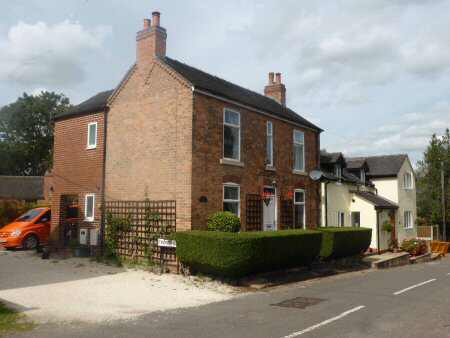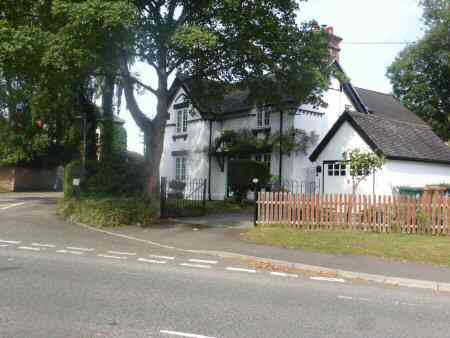ETWALL
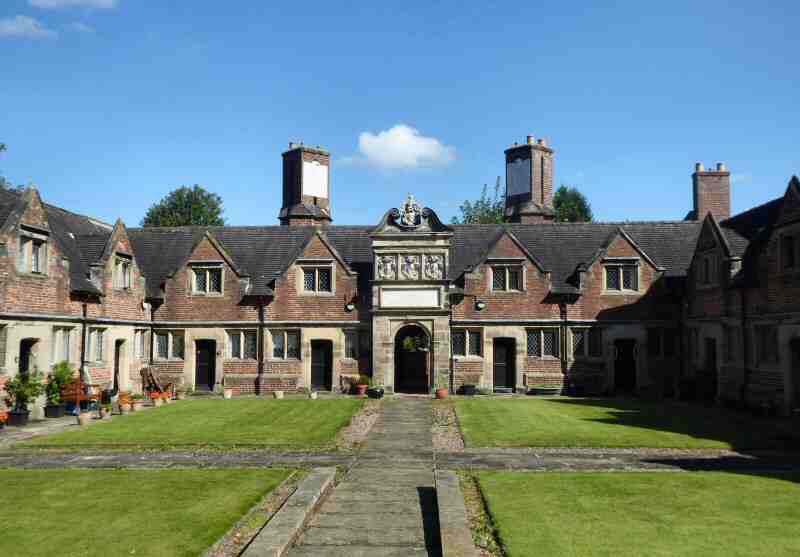
INFORMATION
Where is it? – Off the A516 Derby to Uttoxeter road, take the ‘Etwall’ sign and leave the bypass. There is usually some parking space on Church Hill by St Helen’s Church, but please avoid service times (SK269319). Other street parking is available in the village if need be.
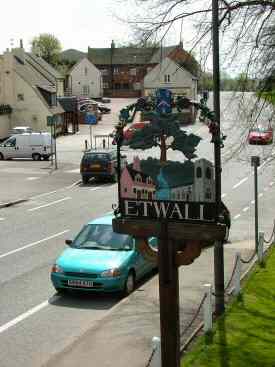
What to do? – Take a walk around the village and don’t miss the Sir John Port Almshouses, set on slightly rising ground, they are particularly attractive. The fine wrought-iron gates by Robert Bakewell, that hang outside the almshouses, add to the appeal – stroll around St Helen’s Church set in the heart of the village – walk along the former Great Northern Railway Line that linked with Derby’s Friargate Station. The old railway line has now been converted into a footpath, which provides a convenient non-vehicular route to Mickleover. There is an access point off Old Station Close on the western side of the village.
Where to eat? – The Hawk and Buckle, 46 Main Street serves food and describes itself as passionate about real ale. For further information: telephone 01283 733460 – Seven Wells, a Greene-King public house on Heage Lane – Telephone number 01283 734551 – The Spread Eagle, 28 Main Street is a traditional pub that serves four regular beers. Plenty of outdoor seating. For further information telephone 01283 735224
Other places to visit – Enjoy a visit to the lovely village of Sudbury and time your arrival to coincide with the opening times at Sudbury Hall and the National Trust Museum of Childhood, famed for its superb plasterwork ceilings and Grinling Gibbon’s carvings. For more information – Tel. 01283 585305 – website: www.nationaltrust.org.uk/sudbury-hall-and-the-national-trust-museum-of-childhood – Tutbury Castle dominates the surrounding landscape, with excellent views over Derbyshire and Staffordshire. Mary, Queen of Scots, was once a prisoner in the castle. Visitors are requested to always check the website before visiting, as due to private functions parts of the Castle or the entire Castle may be closed. For further information: Telephone 01283 812129 – website: www. tutburycastle.com/ – Uttoxeter Heritage Centre is housed in a row of 17th-century timber-framed cottages, with rooms on two floors and a courtyard garden to view. There are two exhibition rooms where changing displays reflect different periods of the town’s past. For more information – Tel. 01889 567176 – website: www.redfernscottage.org.
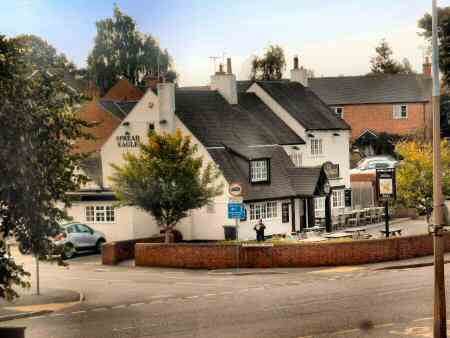
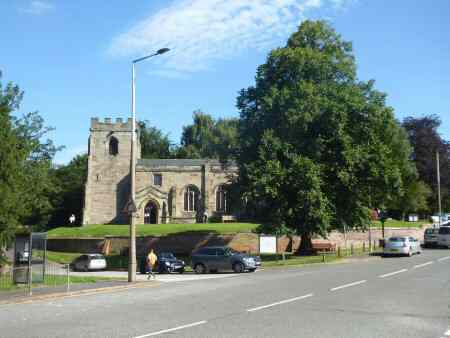
PROFILE
Etwall is situated to the southwest of Derby and has grown enormously since the end of the Second World War, but still retains an attractive village centre. St Helen’s Church and the Sir John Port Almshouses set on rising ground are particularly appealing. The fine wrought-iron gates by Robert Bakewell, that hang outside the almshouses, restored in the 1980s, add an extra touch of quality.
In the Domesday Book, the village was known as ‘Etewelle,’ meaning Eatta’s water. Eatta was a Saxon headman, who settled in the village in the seventh century. He is believed to have built his manor where the church and almshouses are now to be found. Originally, the village developed on a sand outcrop, which covers a base of clay. The sand covering made it easy to dig down to the water stored in the clay base and create wells and the good supply of water made it an attractive place to set up a settlement.
The village grew up along the main road from Uttoxeter to Derby before the by-pass was built. Some of the old buildings still survive today but have mostly been incorporated into more recent developments. Farming was the main activity until the early 20th century and Etwall remained a fairly small rural village until then. However, gradual improvement in communications and people prepared to travel further to work, meant Etwall became an attractive place to live. During the period from 1951 to 1981, the population trebled. This put the local schools under severe strain.
ETWALL HALL
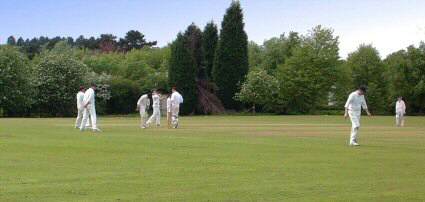
In 1952, the Derbyshire County Council bought Etwall Hall from Reg Parnell, the famous racing car driver, who bred pigs and kept a pedigree dairy herd at Findern. The hall had been used during the Second World War by the Army, first as a petrol depot and later as an equipment supply centre and been left in a somewhat dilapidated state. A secondary modern and a secondary grammar school were built on the site. In 1959, they were amalgamated to form the John Port School. The name of the Port family, who once lived at the hall, has been associated with Etwall since the 15th century. The family’s most famous son, Sir John Port, was the founder of Repton School and Etwall Almshouses. It, therefore, seems entirely appropriate that the new school was named after him. The school now has in the region of 2,000 students with plans to expand and has been converted into an academy, now known as the John Port Spencer Academy. The pupils travel in from a wide catchment area.
ST HELEN’S PARISH CHURCH
Standing in front of the almshouses, St Helen’s Parish Church is believed to date back to a small stone-built church by the Saxons. The present building dates from the 12th century when the church became monastic property. The Norman south doorway and two-arched arcade still survive, but the roof and almost all of the stained glass are from the 19th century. Arthur Milton, the son of the founder of the famous Stoke-on-Trent pottery firm, built the Methodist Chapel in 1837.

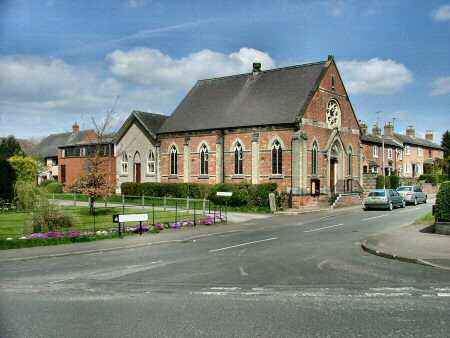
WELL DRESSING
The Well Dressing in Etwall commenced in 1970 when the Etwall Primary School’s Parent-Teachers Association dressed a site near the old school well as part of its centenary celebrations. At the same time, Etwall Women’s Institute dressed the Town Well on the village green near the church. The money raised was used to help defray the costs of the school’s new learner swimming pool. Although a comparative newcomer to the ancient tradition of well-dressing, Etwall is now up there with the best, not only for the actual dressing but also for the entertainment provided and the promotion of the event. Visitor donations, plus a percentage of the profits made on the various stalls and sideshows, have produced thousands of pounds for charities and deserving village causes.
VILLAGE HALL
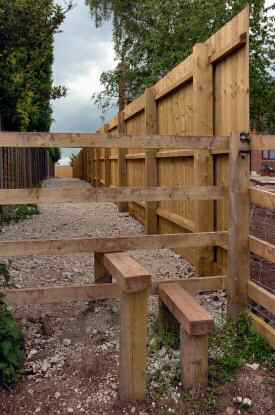
In May 1989, Councillor Frank Wickham cut the first sod in the construction of the village hall. Like his father before him, he had campaigned tirelessly to improve the facilities in the village. Sadly, he died three months later. In recognition of his 37 years of service, the new village hall was named after him. He had been involved in helping to provide recreational facilities for children with the opening of the King George V Field, the building of a library, a second playing field on Sandypits Lane, a bowling green and a sports pavilion.
PUBLIC HOUSES
A public house stood on the site of the Spread Eagle as far back as 1577. It has been frequently used as a meeting place for village organizations over the years. The Hawk and Buckle public house takes its name from the buckled hawk on the crest of the Cotton family, a well-known local family.
BURNASTON
Tucked away in the countryside along narrow lanes to the east of Etwall is the pretty village of Burnaston. It is a small mainly commuter village as despite its location it does have quick access to major road networks. There is no church, shop or public house in Burnaston, but there is a village hall which was formerly the Mission Room and a few farms. Essentially a very quiet village its most frequent visitors often are walkers using the popular footpath that links Mickleover and Etwall. The village was probably founded at the same time as Etwall and Bearwardcote between 450 and 550 AD. In the surrounding fields, it is possible to identify the ridge and furrow pattern created by medieval ploughing. The most significant event in modern history was the arrival of the giant Toyota Car Factory a short distance to the south of the village.
As a consequence of the arrival of the car factory Burnaston House was taken down stone by stone to make way. Everything was renumbered and stored for eventual re-erection, but at the time of writing no planning permission has been granted. The house was built for Ashton Nicholas Every Mosley a relation of the Every family of Egginton. The building of the car factory, which started operations in December 1992, also resulted in the closure of Burnaston Airport. This led to the establishment of Derby Airfield at Egginton. It is a small privately owned airport used by several light aircraft owners, as well as housing an aero club and aircraft maintenance firms.
